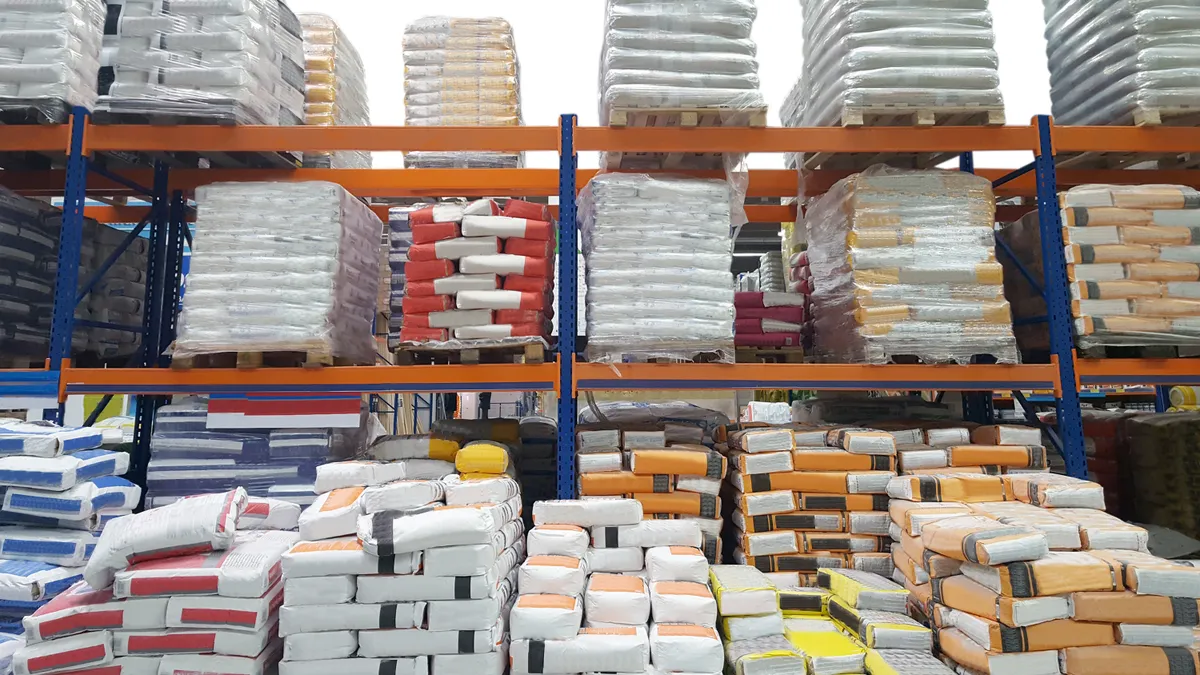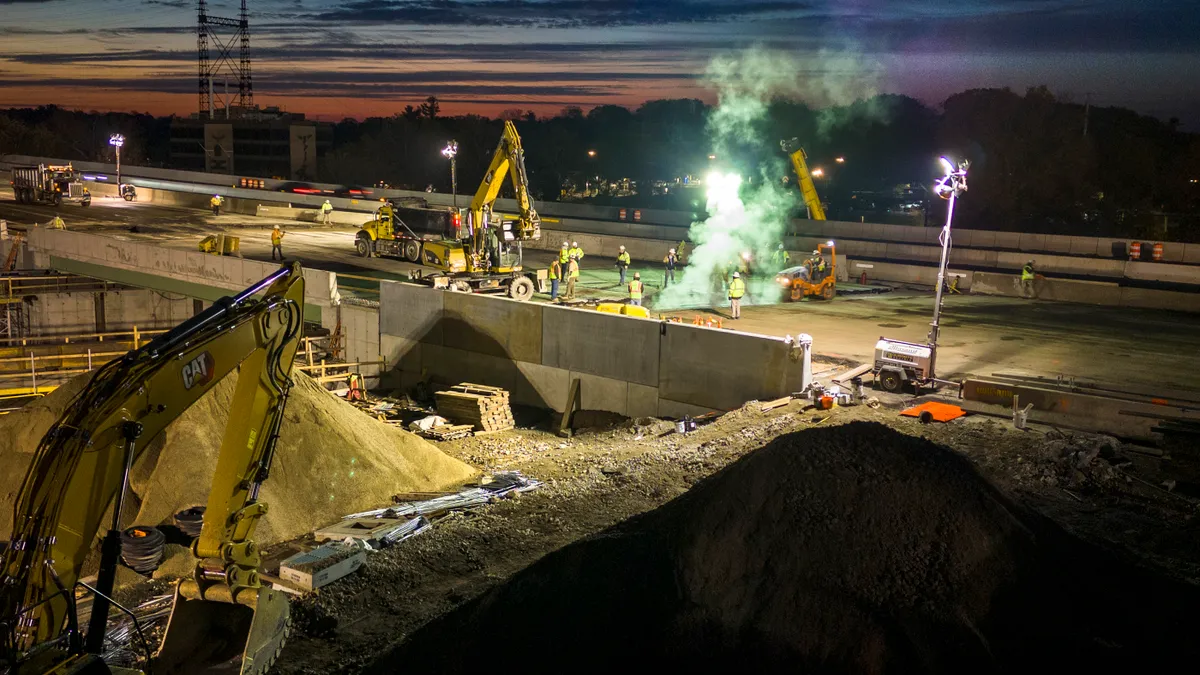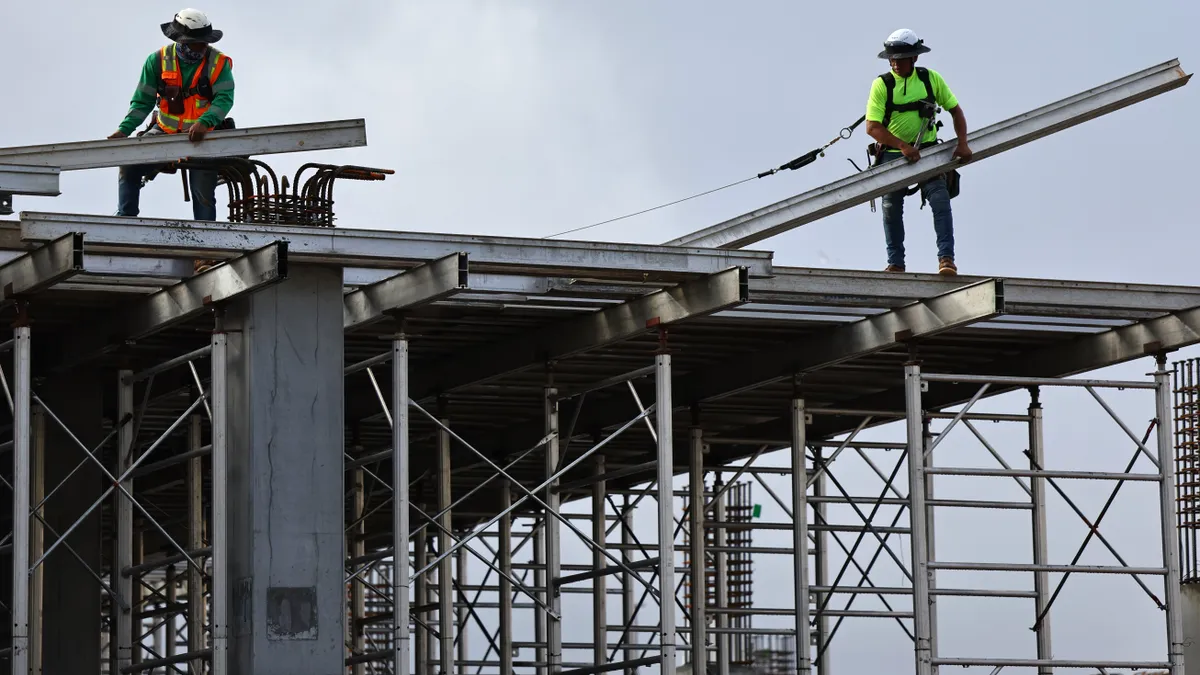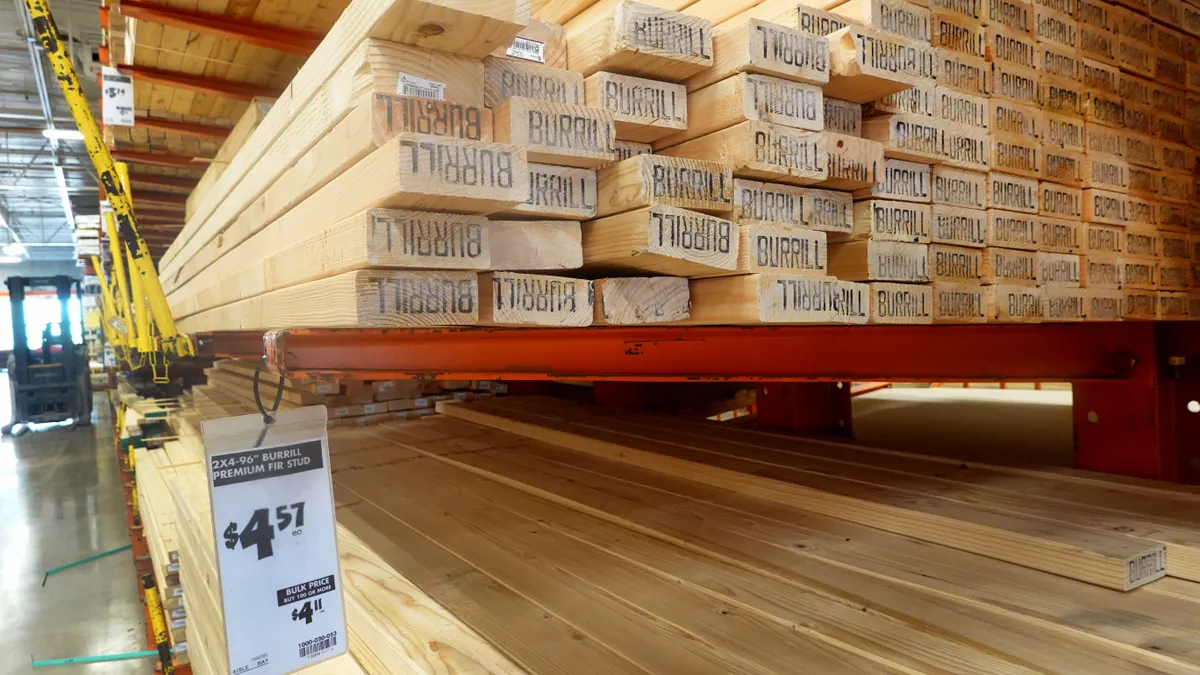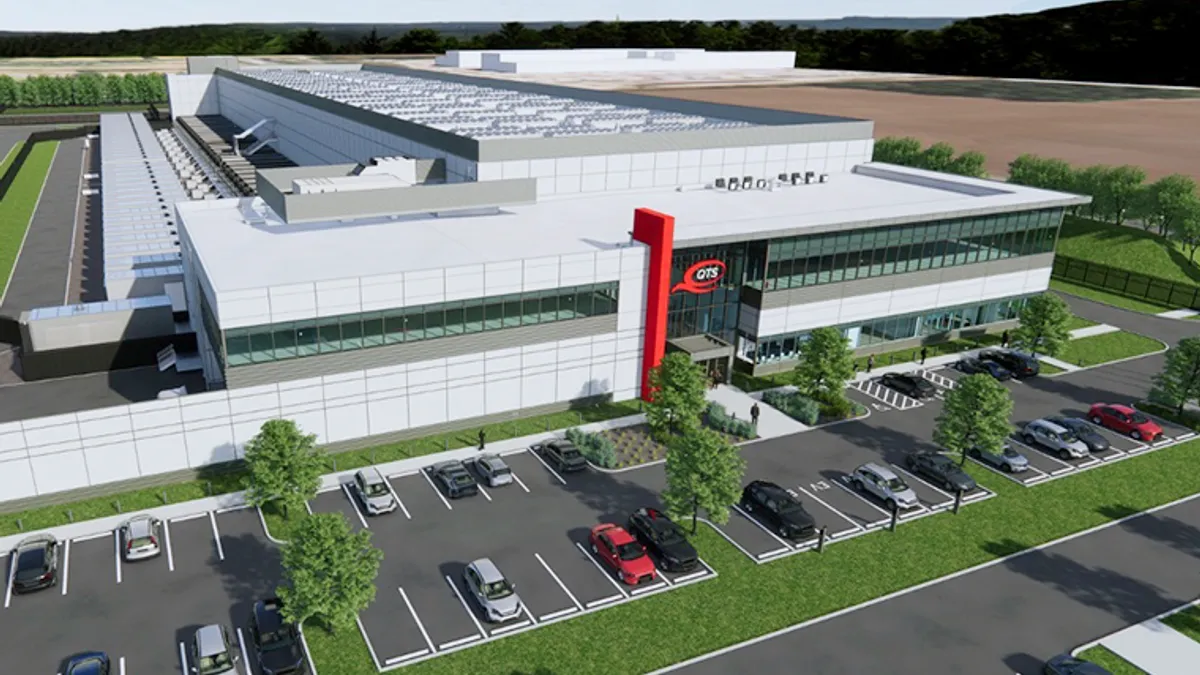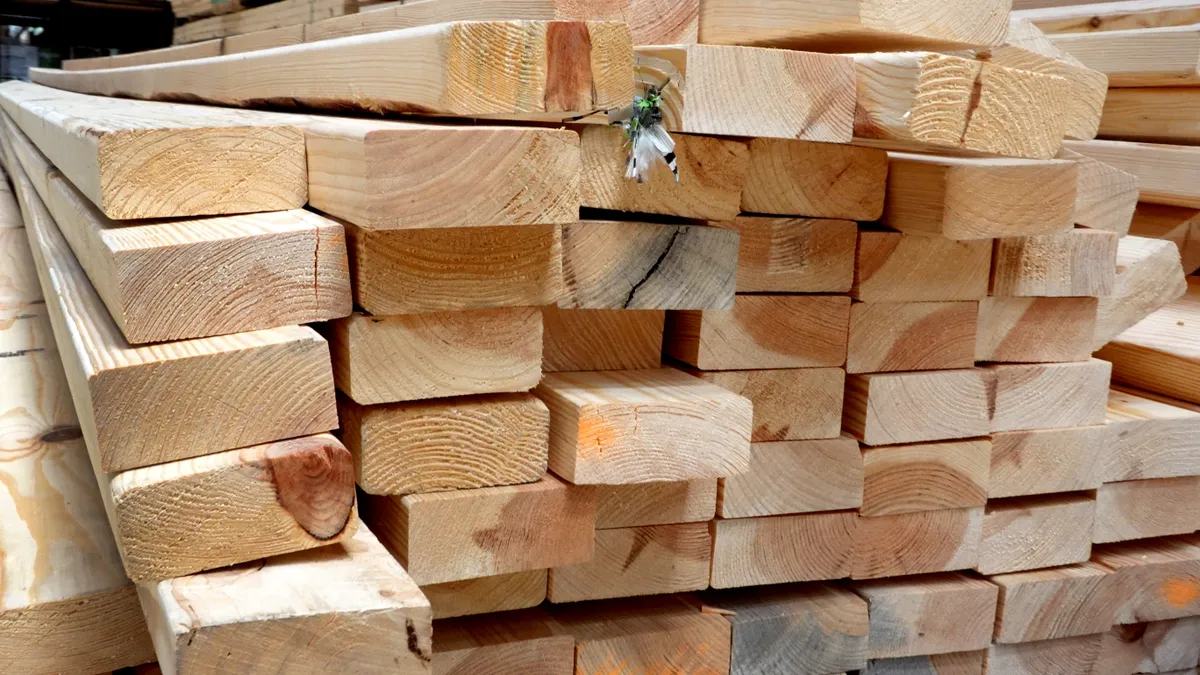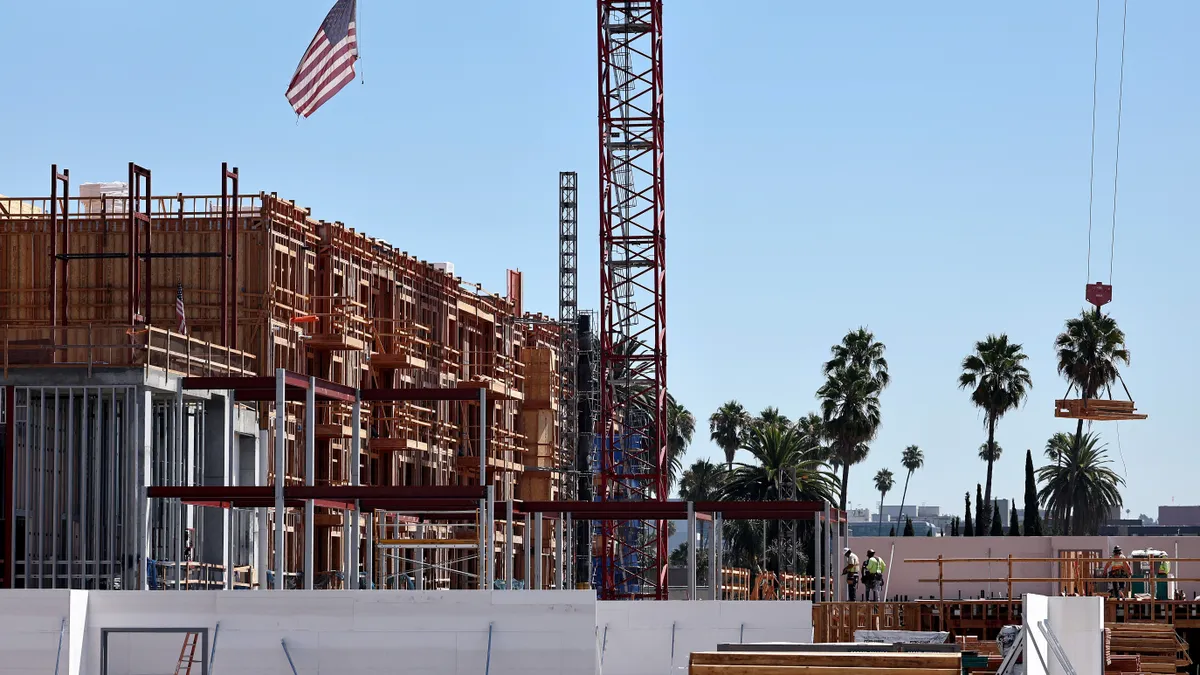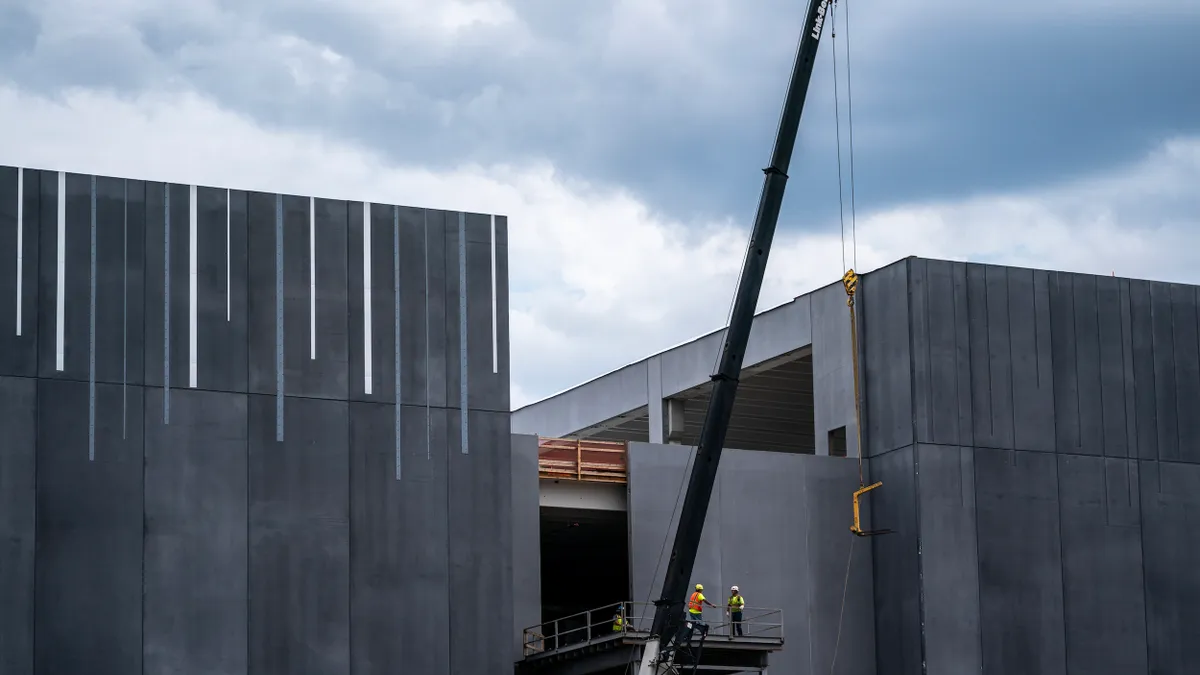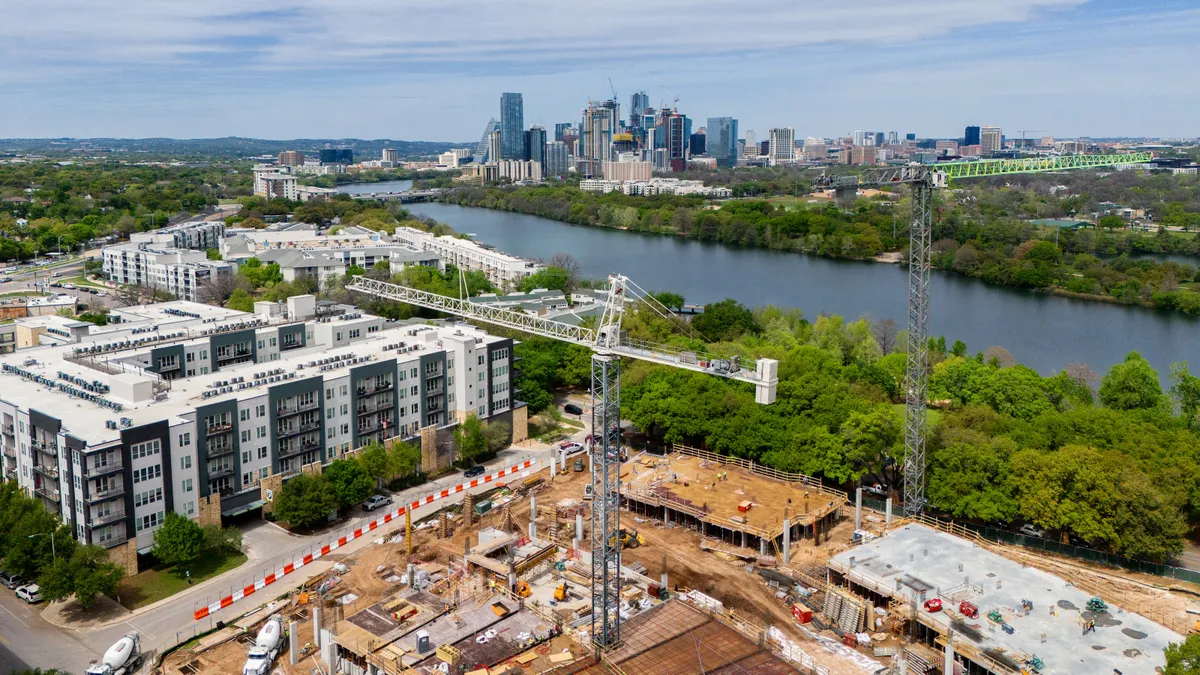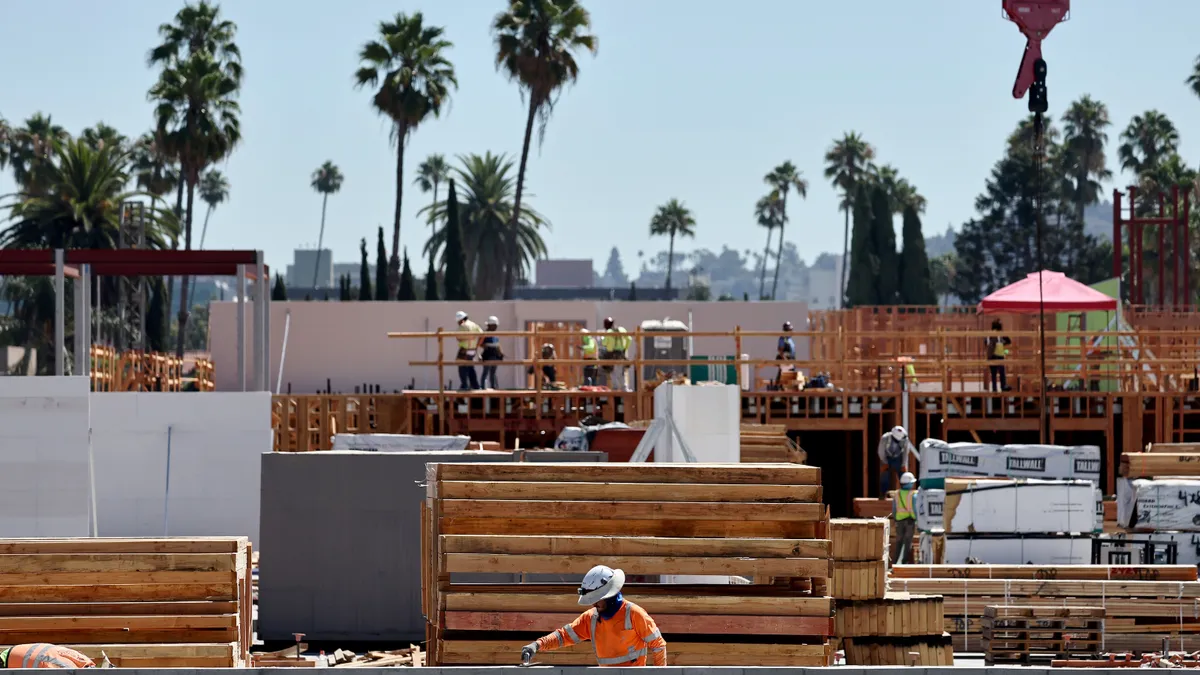The rollercoaster ride of construction material prices is lining up to throw contractors for another loop.
Although prices for key input commodities should continue to fall in 2023 and 2024, according to a report from Oxford Economics, the level still remains greatly elevated compared to pre-pandemic.
About 82.5% of construction materials experienced a significant cost increase since 2020, with an average jump of 19%, according to a construction materials report from construction cost data tracking firm Gordian.
Prices remain elevated since 2020
| Material | Percentage increase in 2023 |
|---|---|
| Wood | 16% |
| Steel | 22% |
| Concrete & Masonry | 15% |
| Electrical conduit | 12% |
| Insulation | 11% |
SOURCE: Gordian
Despite the rising costs of certain materials, some prices this year have begun to show signs of softening, said Sam Giffin, director of data operations at Gordian. But don’t expect materials prices to sustain that falling trajectory, Giffin said.
“Although we’re in the middle of a downswing from historic pricing peaks in 2022, it’s likely that increasing demand for construction will sustain materials and labor pricing through 2024 and 2025,” said Giffin. “For example, although our models show concrete material decreasing 1% to 2% per year through 2025, we anticipate materials like wood, plastics, composites, plaster, gypsum and thermal protection to hit average increases up to 6.5% per year in the same period.”
Beyond the coming couple of years, new additional upward pressure on materials prices will come from the cost of energy transition and the ongoing scarcity of construction labor, according to the Oxford Economics report.
That will ultimately lead to a permanent shift in materials prices, said Andrew Reynolds, global chair at Rider Levett Bucknall, a London-based global construction and property consultancy company with several offices in the U.S.
“The cost of construction materials and the impact on the viability of projects are discussion points we are having daily with our clients,” said Reynolds. “It comes as no surprise to us then that macro events will mean a new higher norm of prices globally influenced by long-term forecast costs of energy and materials.”
Construction input prices posted a 1.1% annual decline in April, which marks the second consecutive month that the cost to build a given project decreased compared to the same period in 2022, according to an Associated Builders and Contractors analysis of government data.
Nevertheless, that level is ultimately expected to rise back up, said Adam Raimond, construction index manager at Gordian.
“More opinion than data-driven perspective, but I think everyone in the market is hoping for a return to normalization after a few years of wild volatility,” said Raimond. “However, with increased demand, a shifting geopolitical landscape, and the rise of near-shoring materials production, it’s unlikely that we’ll see sustained pricing regressions.”




















